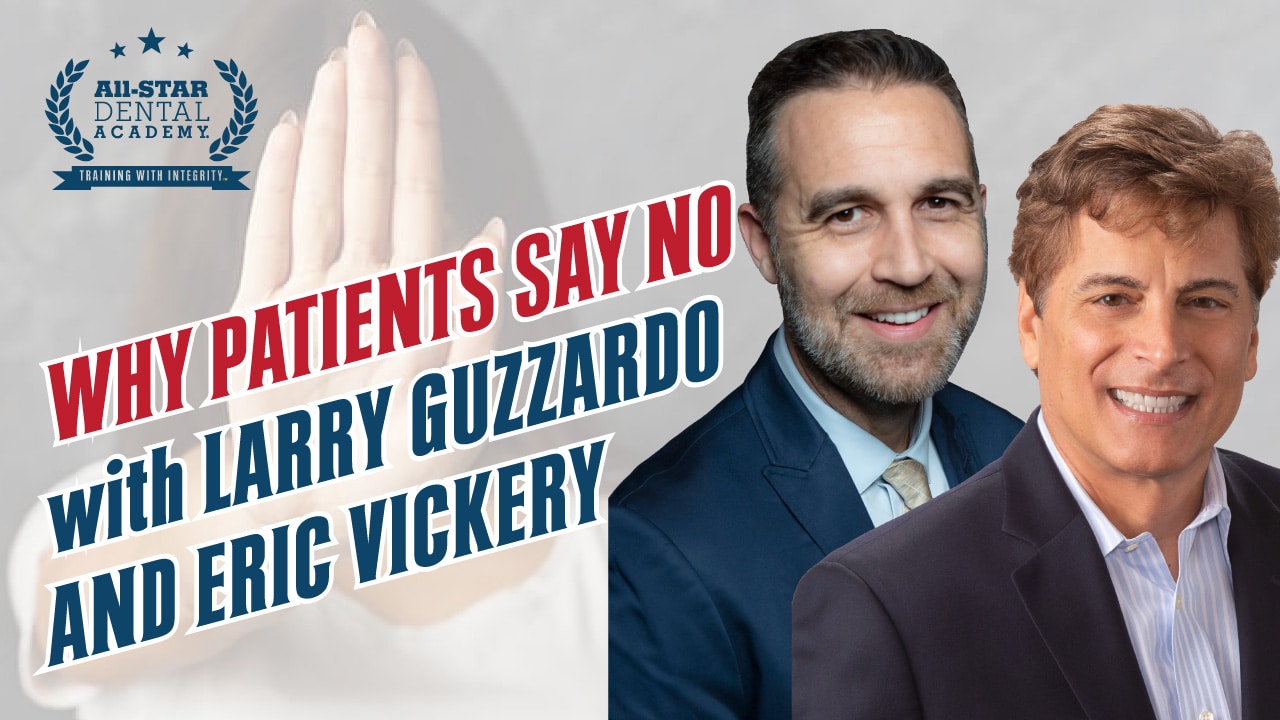Understanding why patients say “no” to a treatment plan is the first step in getting them to say YES. Dental treatment acceptance is a critical step in the patient experience, but it’s important to know that with the proper set-up, presenting a treatment plan will be less stressful, and your acceptance rate will improve.
One thing to keep in mind is that people tend to avoid going to the dentist until they have a big problem. But what are the reasons people hesitate to undergo a dental treatment? And what steps can doctors take to increase dental treatment acceptance?

Fear!
Why do people ignore dental treatment until it’s too late? People are driven by specific, individual motivations. They buy for their reason, not yours. Your patients will not opt for dental treatment just because the doctor says so. Patients need to be guided to a place where they understand the need for treatment and must consciously make a decision to undergo it.
Watch Alex Nottingham JD MBA, Larry Guzzardo, All-Star’s Head Instructor, and Eric Vickery, All-Star Coach, discuss dental treatment acceptance.
Understanding the problem. People don’t seek a solution to a problem they don’t know they have. Patients first need to realize they have a medical condition that needs to be addressed as quickly as possible.
Consequences of making a bad decision. People don’t understand the implications of their conditions. Therefore, they need to be made aware of the consequences of making the wrong decision about dental treatment.

Sharing the Big Picture
What can dentists do to encourage patients to get their problems fixed?
Listen patiently. Patients need to be heard, and carefully listening to them can only enhance the quality of treatment being offered to them and improve dental treatment acceptance.
Convey the consequences of delaying treatment. It is very important that patients understand the consequences of delaying treatment. Convey the potential for additional problems, and that the same treatment, when done three years down the line, will probably cost much more than the original amount. And that’s not even counting discomfort during the delay.
For example, exposed nerve endings can cause your teeth to become sensitive over time. A cavity that could have been easily treated could instead turn into a need for a root canal.
Ensure clear communication between the staff regarding the case. Patients often look to the other professionals in the office immediately after the doctor recommends a certain treatment. The staff must confidently back up the doctor’s recommendations.
This can only happen if there is clear communication between the staff and the doctor. Otherwise, the practice can end up looking disorganized (at best), or shady (at worst) and the patient will lose trust.
Back up treatment recommendation with encouragement. Once upon a time, the doctor could simply dictate treatment, and the patient would accept what was said. Today’s patients are a bit different. They expect to be a part of the process and if left out, will probably say no to dental treatment acceptance.
It’s important, therefore, that the doctor “collaborates” with the patient from the beginning. Make sure that the patient is made aware of exactly what is going on and why it is being carried out. And having everyone – doctor, assistants, hygiene, and the front office – backing up the doctor’s recommendations with logical reasoning and encouragement goes a long way in helping patients feel happy committing to treatment.

Dental Treatment Acceptance: Bringing it together
Remember that patients today are not used to following doctor’s “orders”. They are more informed (for better or worse) by doing independent research. And they don’t hesitate to question the doctor’s recommendations.
Therefore, doctors need to be more patient and understanding, especially when the patient is skeptical regarding their treatment. Include the patient in the process and then present treatment options while backing them up with logical reasoning will work wonders in improving dental treatment acceptance.
I’d like to invite you to participate in our online training event “Case Acceptance: Getting Patients Saying YES without Hype, Pressure, or Sales.” We will explore issues such as the ones in this blog post that keep your patients from accepting dental treatment.
Listen to Alex Nottingham JD MBA, Larry Guzzardo, All-Star’s Head Instructor, and Eric Vickery, All-Star Coach, discuss dental treatment acceptance.








